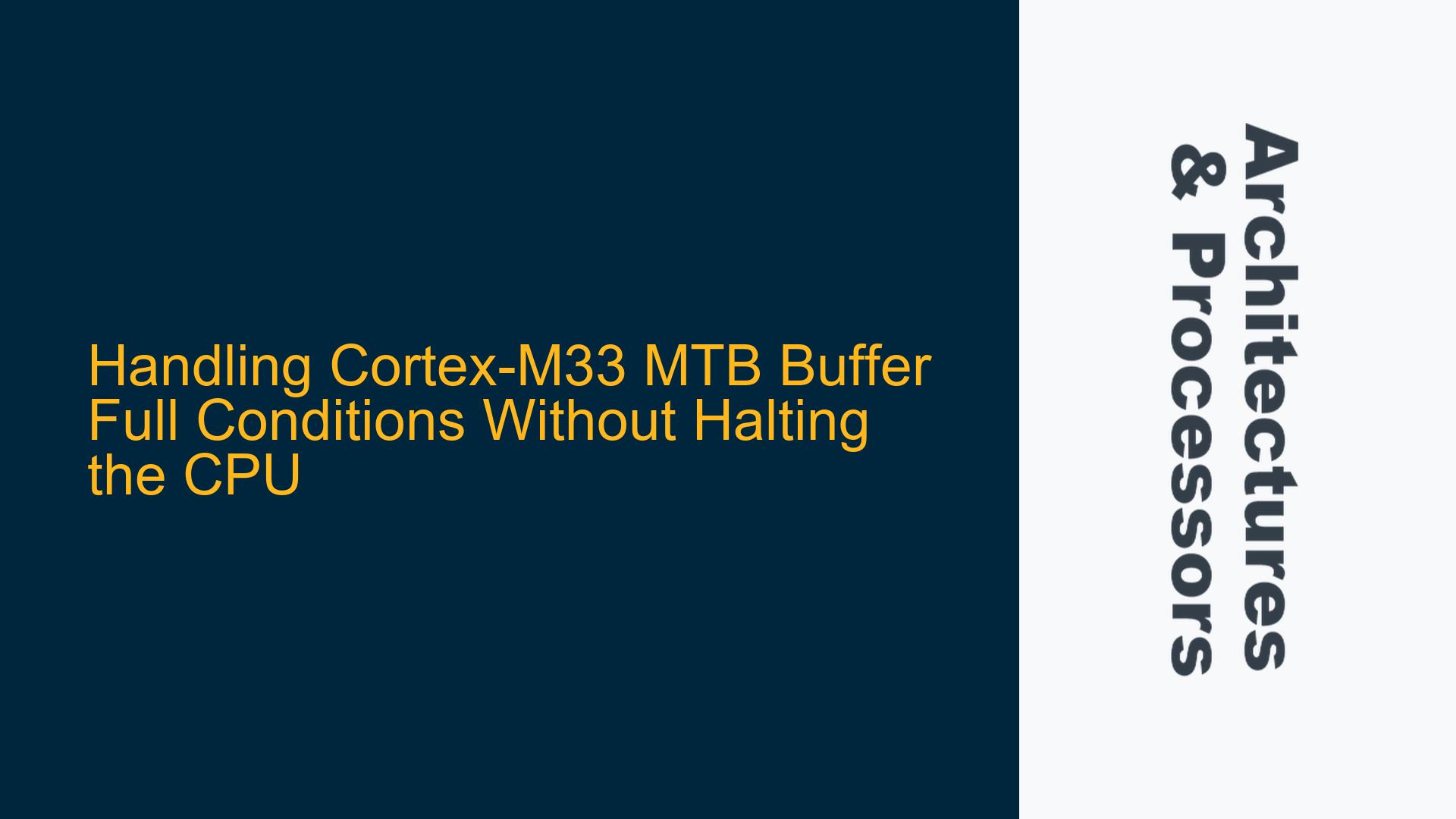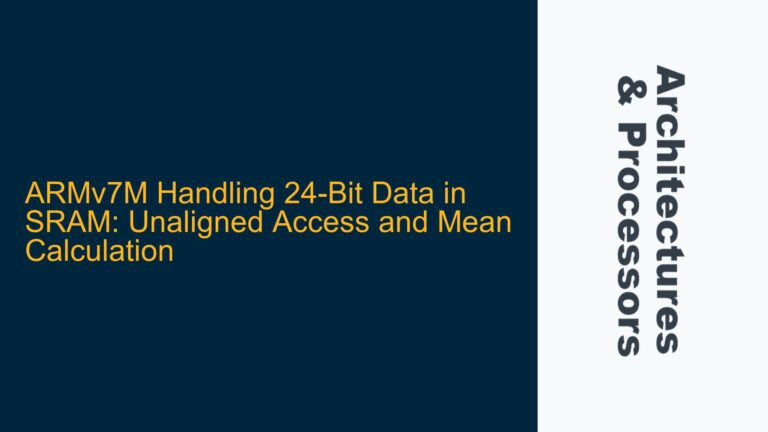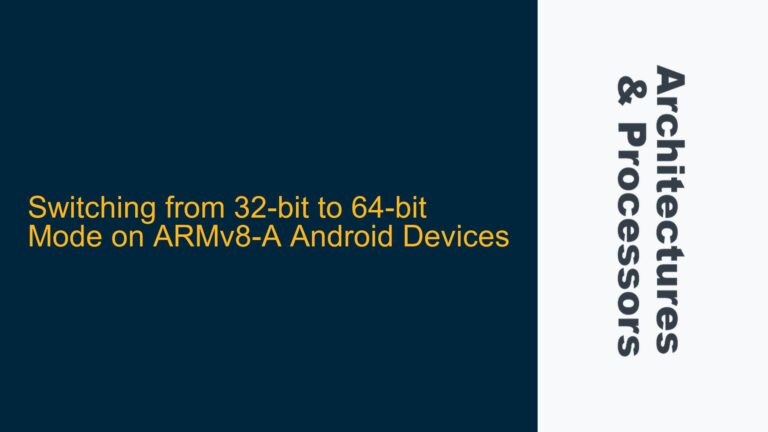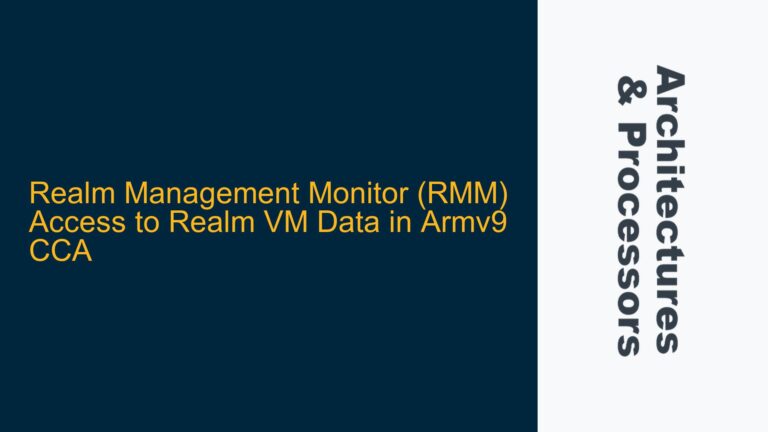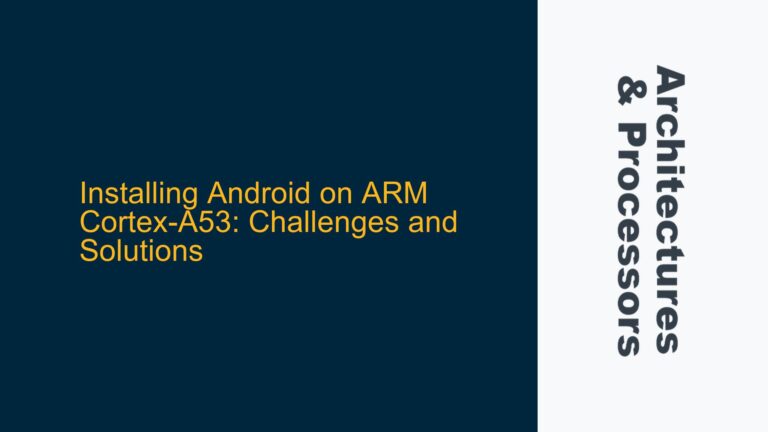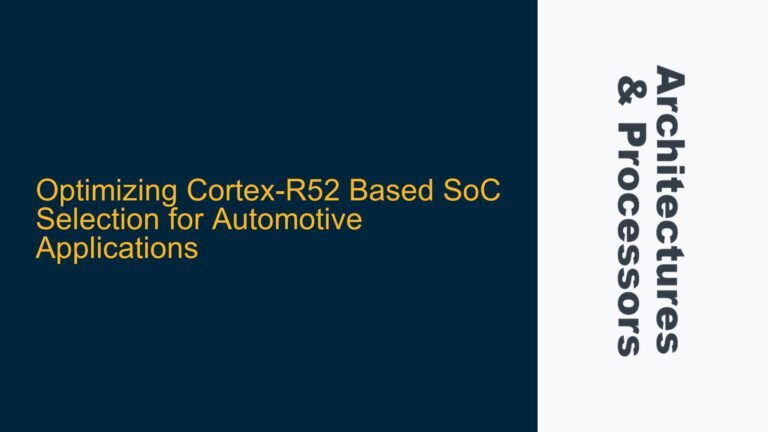MTB Buffer Full Behavior and Debug State Challenges in Cortex-M33
The Cortex-M33 Micro Trace Buffer (MTB) is a powerful feature designed to capture non-sequential program execution branches, providing valuable insights into program flow for debugging and performance analysis. The MTB writes trace data directly to a designated SRAM buffer, but when this buffer fills up, the system must decide how to handle the overflow. The Cortex-M33 offers two primary mechanisms for managing a full MTB buffer: overwriting the buffer from the beginning or triggering a Debug State via a watermark mechanism. The latter is particularly useful for ensuring that no trace data is lost, but it introduces a significant challenge—halting the processor.
When the MTB buffer reaches its watermark level, the processor enters the Debug State, which traditionally requires an external debugger or another core to intervene. This behavior is problematic in single-core systems or scenarios where an external debugger is unavailable or undesirable. The Debug State halts the processor, preventing further execution until the debugger clears the HALT bit or an external restart request is issued. This interruption is often unacceptable in real-time systems or applications requiring continuous operation.
The core issue revolves around finding a way to notify the CPU of a full MTB buffer without halting the processor. This requires a deep understanding of the Cortex-M33 architecture, particularly the interactions between the MTB, Debug Monitor Exception, and External Debug Request mechanisms. The challenge is compounded by the TrustZone security features, which partition the system into secure and non-secure states, adding layers of complexity to memory access and exception handling.
MTB Watermark Behavior and DebugMonitor Exception Interactions
The MTB watermark mechanism is designed to trigger an External Debug Request when the buffer fills to a predefined level. This request can be monitored by the DebugMonitor Exception, which provides a potential pathway to handle the buffer full condition without halting the processor. However, the relationship between the Debug State and the DebugMonitor Exception is nuanced and requires careful configuration.
The DebugMonitor Exception is a lower-priority exception that allows the processor to continue executing while handling debug-related events. It is distinct from the Debug State, which halts the processor entirely. The key to leveraging the DebugMonitor Exception lies in configuring the system to route the External Debug Request triggered by the MTB watermark to the DebugMonitor Exception handler rather than entering the Debug State.
This configuration involves setting up the Debug Exception and Monitor Control Register (DEMCR) to enable the DebugMonitor Exception and ensuring that the External Debug Request signal is routed correctly. Additionally, the MTB watermark level must be carefully calibrated to ensure that the DebugMonitor Exception is triggered with sufficient time to handle the buffer full condition before trace data is lost.
The TrustZone security features further complicate this setup. The MTB_SECURE register allows partitioning the MTB buffer into secure and non-secure regions, but its configuration is not always straightforward. In some implementations, certain bits of the MTB_SECURE register may be read-only, limiting the ability to fully control the buffer partitioning. This limitation can affect the ability to trigger secure faults or exceptions when non-secure trace writes occur, adding another layer of complexity to the system design.
Configuring DebugMonitor Exception and MTB Watermark for Non-Halting Notifications
To address the challenge of notifying the CPU of a full MTB buffer without halting the processor, the following steps can be taken:
-
Enable the DebugMonitor Exception: The DebugMonitor Exception must be enabled in the DEMCR register. This involves setting the MON_EN bit to 1, which allows the processor to handle debug-related events via the DebugMonitor Exception handler rather than entering the Debug State.
-
Configure the MTB Watermark Level: The MTB watermark level must be set to a value that ensures the DebugMonitor Exception is triggered before the buffer is completely full. This requires careful consideration of the trace data generation rate and the time required for the exception handler to process the buffer full condition.
-
Route the External Debug Request: The External Debug Request triggered by the MTB watermark must be routed to the DebugMonitor Exception handler. This involves configuring the Debug Halting Control and Status Register (DHCSR) to ensure that the External Debug Request signal is recognized and processed by the DebugMonitor Exception handler.
-
Handle TrustZone Security Considerations: If the system uses TrustZone, the MTB_SECURE register must be configured to partition the MTB buffer into secure and non-secure regions. This ensures that trace data from both secure and non-secure states is captured correctly. If certain bits of the MTB_SECURE register are read-only, alternative strategies such as using the SAU or MPU to enforce memory access restrictions may be necessary.
-
Implement the DebugMonitor Exception Handler: The DebugMonitor Exception handler must be implemented to handle the buffer full condition. This involves reading the MTB buffer contents, processing the trace data, and resetting the MTB buffer to allow new trace data to be captured. The handler must be designed to execute quickly to minimize the impact on system performance.
-
Test and Validate the Configuration: The system must be thoroughly tested to ensure that the DebugMonitor Exception is triggered correctly and that the MTB buffer full condition is handled without halting the processor. This involves running test cases that generate trace data at varying rates and verifying that the DebugMonitor Exception handler processes the buffer full condition as expected.
By following these steps, it is possible to configure the Cortex-M33 MTB to notify the CPU of a full buffer without halting the processor. This approach leverages the DebugMonitor Exception to handle the buffer full condition in a non-intrusive manner, ensuring continuous system operation while capturing valuable trace data.
Detailed Configuration and Implementation Guidelines
To provide a comprehensive solution, the following table outlines the key registers and their configurations for enabling the DebugMonitor Exception and handling the MTB buffer full condition:
| Register Name | Bit Field | Configuration Value | Description |
|---|---|---|---|
| DEMCR | MON_EN | 1 | Enables the DebugMonitor Exception. |
| MTB_POSITION | WRAP | 0 | Disables buffer wrapping; ensures buffer stops when full. |
| MTB_FLOW | WATERMARK | Custom Value | Sets the watermark level for triggering the External Debug Request. |
| DHCSR | C_DEBUGEN | 1 | Enables debug functionality, including External Debug Request handling. |
| MTB_SECURE | SECURE_EN | 1 | Enables secure partitioning of the MTB buffer (if supported). |
| SAU/MPU Configuration | Region Settings | Custom | Configures memory regions to enforce secure/non-secure access restrictions. |
DebugMonitor Exception Handler Implementation
The DebugMonitor Exception handler must be carefully implemented to ensure efficient processing of the MTB buffer full condition. The following pseudocode outlines the key steps:
void DebugMonitor_Handler(void) {
// Read the MTB buffer contents
uint32_t* mtb_buffer = (uint32_t*)MTB_BASE_ADDRESS;
uint32_t buffer_size = MTB_BUFFER_SIZE;
uint32_t trace_data[buffer_size];
for (int i = 0; i < buffer_size; i++) {
trace_data[i] = mtb_buffer[i];
}
// Process the trace data (e.g., store to external memory, analyze, etc.)
process_trace_data(trace_data, buffer_size);
// Reset the MTB buffer
MTB_POSITION = 0; // Reset the write pointer to the beginning of the buffer
MTB_FLOW &= ~(1 << WATERMARK); // Clear the watermark flag
}
Testing and Validation
Testing the configuration involves generating trace data at varying rates and verifying that the DebugMonitor Exception handler processes the buffer full condition correctly. The following steps outline the testing process:
-
Generate Trace Data: Use a test program that generates trace data at a controlled rate. This can be achieved by inserting branch instructions or other non-sequential operations into the code.
-
Monitor DebugMonitor Exception: Use a debugger or logging mechanism to monitor the DebugMonitor Exception handler’s execution. Verify that the handler is triggered when the MTB buffer reaches the watermark level.
-
Verify Trace Data Integrity: After the DebugMonitor Exception handler processes the buffer full condition, verify that the trace data is correctly captured and processed. This may involve comparing the captured trace data with the expected program flow.
-
Adjust Watermark Level: If the DebugMonitor Exception handler is not triggered in time or if trace data is lost, adjust the MTB watermark level and retest. The goal is to find a balance between early notification and minimizing the frequency of exception handling.
By following these guidelines, developers can effectively configure the Cortex-M33 MTB to handle buffer full conditions without halting the processor, ensuring continuous operation while capturing valuable trace data for debugging and analysis.
